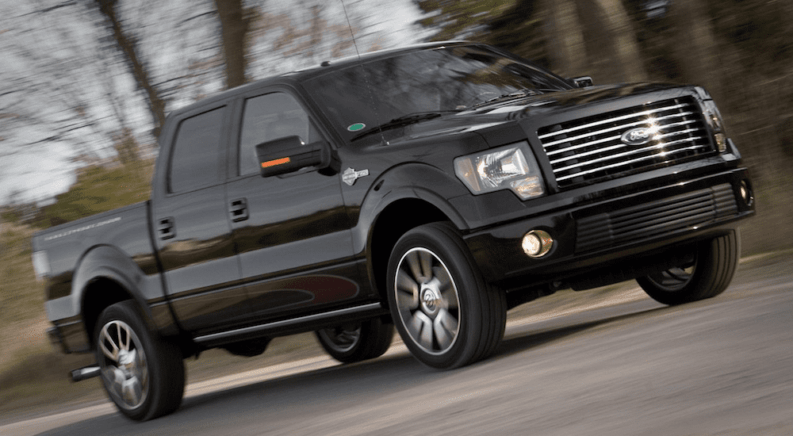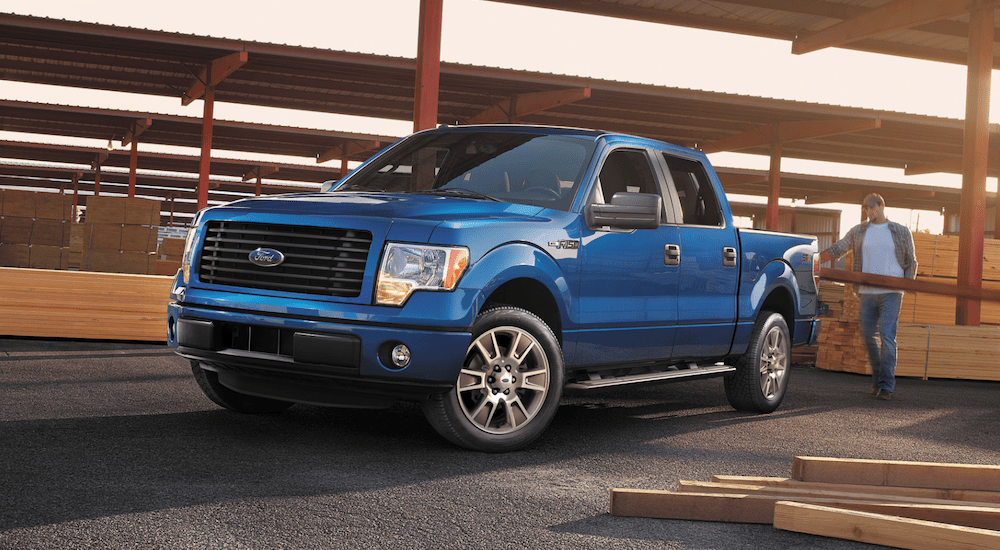The Sedan is officially dead at Ford Motor Company; the time of death may have been called early spring 2018 but cars and sedans probably were diagnosed as terminal around the early 2000s; the years since have been spent fighting a losing battle against the consumer preferred SUV, crossover, and top-dog truck. The recession and high gas prices were a lifeline for cars offering better fuel economy and lower MSRP, but the economic bounce-back officially has pulled the plug on an already dead vehicle category, at least for the time being; and even before Ford’s 2020 official Sedan discontinue deadline, the huddled masses of Ford executives, workers, and drivers proclaim long live the reigning king of trucks, the Ford F-series. New and used Ford trucks have dominated sales at dealerships for 42 years as America’s best-selling truck and for 37 of those years as America’s best-selling vehicle.
At the recent Detroit AutoShow, Jim Farley, Ford president of global markets, had this to say about their truck brand, its’ current dominance, and coming future, ”Ninety-percent of our capital now is allocated toward trucks and utilities,” Farley said. “We have the F-Series, the world and America’s best-selling truck. More than a million units were sold last year. F-Series core strength at the end of the day is: There’s a truck for every customer and we know those customers really, really well. From the F-150 all the way to the F-750. They all matter to us.”
There seems to be no end in sight for Ford’s truck dominance as consumers more and more turn to trucks not just for utility on the work site but for everyday driving affairs. F-Series trucks are no long the no-frills workhorses they once were as originally intended. Automakers have responded to consumer demand with higher quality interiors and luxury features, but these come with a high price tag. And there seems to be little competition for the F-Series save for itself. At least until automakers price themselves out of consumer reach with the truck market’s rising prices. Until that time comes, long live the reigning king, right? Their truck division does make up a third of Ford’s sales and an even greater share of the company’s profits. So Ford continues in stride leveling up their top dog seller even recently announcing additions to their F-Series lineup with hybrid and battery electric options that are not even using fuel economy as a major selling point. Innovation and brand loyalty And that consumers will pony up the cash no matter the cost.
With new automobile prices rising and trucks already initially priced at the top tier for expensive vehicles, consumers may soon reach a breaking point for what is TOO expensive. That is where we come in to show you that there are cheaper routes to get the truck you want. And lucky for all those cost-conscious truck buyers, a large selection of used Ford trucks are at their disposal for a fraction of the price of the new. Minus the new car smell and the most up-to-date gadgets, truck enthusiasts get the same built Ford tough reliability with a used truck as they would a new. But not all trucks are created equal; even within the ranks of Ford’s F-Series, there are highs and lows throughout its storied past. In order to help you better pick which of the used Ford trucks is right for your driving needs, we have listed some of our favorite years detailing the specs of each.
B.C.A vs C.A.
First off, when looking at previous models of the Ford F-Series, it is important to make the distinction of which era the truck came from; whether the year of the truck’s release was B.C.A. or C.A, Before Crafted with Aluminum or Crafted with Aluminum. For the 2015 F-150, Ford undertook a complete redesign crafting the vehicle on an aluminum body structure instead of steel. This was a big gamble for a vehicle that could have easily relied on mediocrity and simply riding on the coattails of the F-Series’ previous years of success. By using aluminum, Ford was able to shed 750 pounds of weight from the F-150 increasing performance capabilities (a lighter truck is faster, easier to maneuver, and more fuel efficient) without sacrificing the heavy-duty capacity for towing and hauling. A newly introduced 2.7-liter EcoBoost twin-turbocharged V6 engine was also introduced, and the same engine block was made available in a 3.5-liter variant; at 15-19 mpg in the city and 21-26 mpg on the highway, both engines drastically improved notions of fuel economy standards when talking Full-Size trucks.
BIG 12
The 12th generation F-series would run till its redesign after 2014 but the technological advancements that occurred during that period are still impressive by today’s industry standards for full-size trucks. It offered a smooth, quiet ride that was as easy-to-drive as any smaller vehicle. Ford F-150 pickups received an upgrade in their fuel economy ratings, thanks to the introduction of the powerful twin-turbocharged 3.5-liter V6 EcoBoost engine. According to TruckTrendNetwork, Ford was able to improve fuel economy on the F-Series entire lineup by an average of 8%. With the inclusion of the fuel-conscious SFE package, the full-size F-150 was capable of delivering 15mpg city/21mpg highway for a combined 17mpg. And then, Ford took it one step further with their high-volume 5.4L V-8 that was able to get 12% better fuel economy than the previous generation’s engine.
The F-150 was able to manage an increase in better fuel economy while still delivering a towing capability of 11,300 lbs and hauling capacity of 3030 lbs. The 12th generation had all the towing and hauling power to handle heavy-duty pickup jobs while saving drivers money at the pump by increasing fuel economy. Not a bad year. Did I fail to mention that the F-Series also swept the awards that year? I mean all of the awards: Motor Trend 2009 Truck of the Year Award, Motor Trend’s Truck Trend Top 5 Trucks from SEMA, Finalist 2009 North American Truck of the Year, Detroit News Truck of the Year, 2009 Best Redesigned Vehicle from Kelley Blue Book’s, “Best Overall Half-Ton Pickup” from PickupTrucks.com, “Automotive Excellence” award in the Workhorse Category from Popular Mechanics, and “Top Safety Pick” from the Insurance Institute for Highway Safety.
There are plenty more, but those are just a few of the big name awards, Well heck, not a bad generation. And a quick search online for 2009 F-150s lists an average sale price today of $6,971 – $15,097; that is close to $40,000 worth of savings when compared against a new F-150.
LUCKY 13
The gamble paid off as consumers both old and new, responding favorably to the redesigned F-Series, assembled enough purchase power to keep the F-150 at the top of the list for best selling vehicle and pickup truck in America. A trend that has continued since the release of aluminum framed Ford trucks into present day. A quick survey of used 2015 F-150 shows the average price paid as $18,607 – $39,056; when compared to the MSRP of a new F-150, that’s still savings of $10-15,000 for the same vehicle with a few more years and couple hundred more miles under its belt.
As Ford puts it, the “…F-Series average transaction prices have steadily grown since the 2014 debut of the new F-150 with a high-strength, military-grade, aluminum-alloy body, climbing an average of $7,400 per truck. The switch to aluminum and high-strength steel helped to improve fuel economy and set the F-150 apart from the rest of the field.”
The 13th generation F-150 sold surprisingly well in 2015 and sales have only steadily increased, but the F-Series has dominated the truck market for 42 consecutive years which means there are great editions BCA (Before Crafted with Aluminum) as well. Probably the most standout year for the BCA F-Series would be 2009 with the introduction of the 12th generation.
WHO NEEDS LUXURY WHEN YOU’VE GOT RELIABILITY
As the prices continue to escalate into the luxury zone for new F-150s, we urge you to take a closer look at the past. Early 12th and 13th generations are proven winners with high-reliability ratings offered at a fraction of the cost with the brunt of depreciation having already taken effect. Don’t limit yourself in thinking only new because even used can be new to you, as long as its built Ford.





